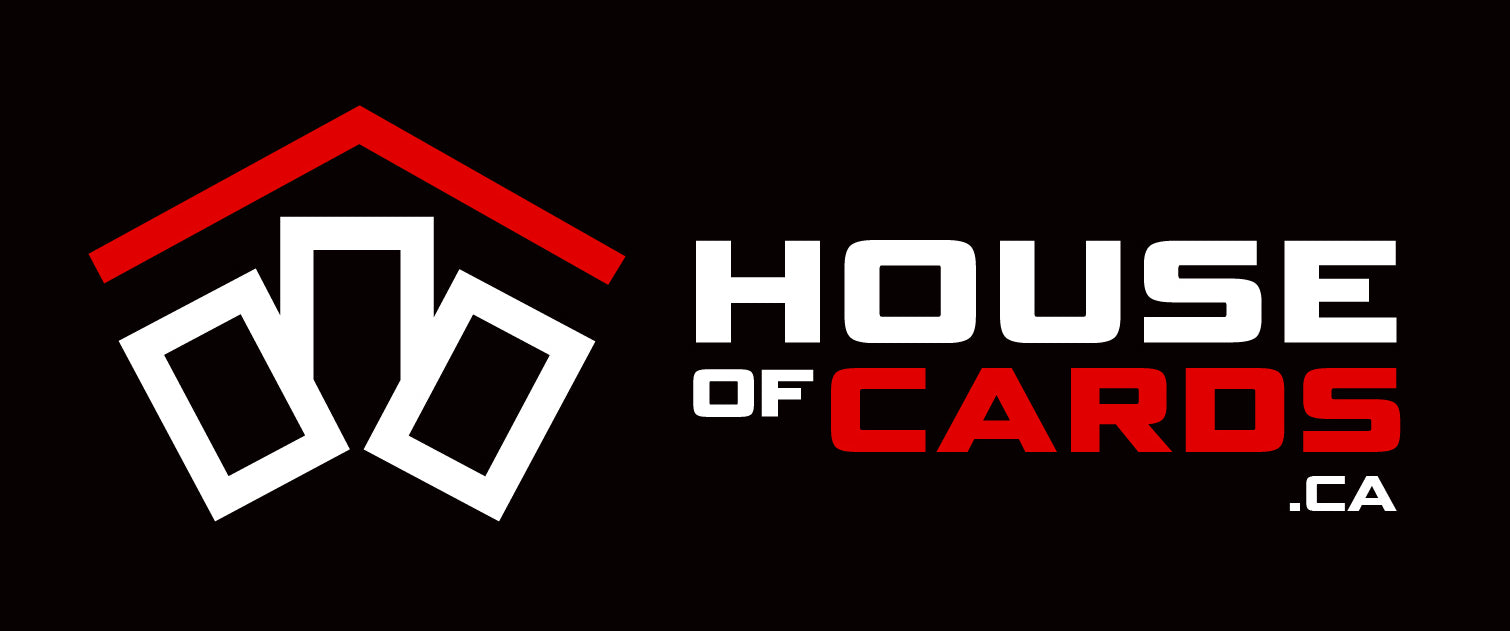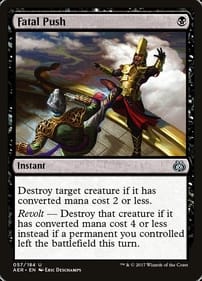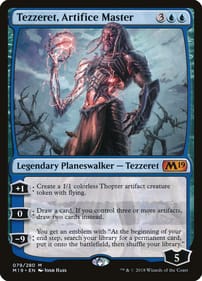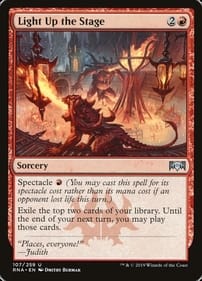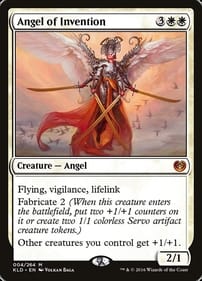Introduction to Competitive Elder Dragon Highlander (cEDH)
Welcome to the high-octane world of Competitive Elder Dragon Highlander, more affectionately known as cEDH. This isn't your casual kitchen table Magic: the Gathering—it's a realm where the stakes are as high as the players' ambitions, a place where only the most finely tuned decks, the sharpest strategies, and the most adept pilots dare to tread.
cEDH takes the vast, creative landscape of Commander—a format celebrated for its social and expressive play—and filters it through the lens of competitive rigor. Here, the communal ethos of "just for fun" gets an adrenaline shot of "to win," but not at the cost of camaraderie or the joy of the game. It's a delicate balance, maintaining the spirit of Commander while pushing the boundaries of what's possible within the ruleset to secure victory.
The objective? To achieve a win condition as efficiently as possible, often within the first few turns of the game. But cEDH is not merely a sprint; it's a chess match at lightning speed. It requires an intimate understanding of the meta, an ability to predict opponents' moves, and the creativity to find paths to victory even when the odds seem insurmountable.
In this guide, we'll dive deep into the heart of cEDH. We'll explore deck building principles that separate the competitive from the casual, the strategies that define the meta, and the mindset required to thrive in such a demanding environment. Whether you're a seasoned player looking to refine your approach or a newcomer with eyes on the apex of Commander play, this guide aims to equip you with the knowledge, tactics, and insight needed to stand your ground and claim victory in the competitive arena.
So, strap in, and let's embark on this journey together. Welcome to cEDH, where the magic of Commander meets the thrill of intense competition.

The Appeal of cEDH: Why Players Choose This Format
Competitive Elder Dragon Highlander (cEDH) might not be for everyone, but for those who are drawn to its challenges and complexities, the format represents the pinnacle of Magic: the Gathering gameplay. Here are several reasons why players choose to dive into the high-stakes world of cEDH:
1. The Intellectual Challenge
cEDH is like a constantly evolving puzzle, where players must use their decks to solve problems presented by their opponents in real-time. The format demands a deep understanding of the game's mechanics, a keen awareness of the meta, and the ability to anticipate and counter opponents' strategies. For those who love to push their strategic thinking to the limit, cEDH offers an unparalleled intellectual challenge.
2. The Competitive Spirit
Some players are naturally competitive and seek out environments where they can test their skills against the best. cEDH provides a platform for high-level competition, where even the smallest decisions can have a significant impact on the outcome of a game. This intense competitive atmosphere is exhilarating for players who thrive under pressure and enjoy the thrill of close, hard-fought matches.
3. Mastery and Optimization
cEDH players often take pride in optimizing their decks to the highest possible standard. This involves meticulous tuning and refining, from selecting the perfect mana base to choosing each spell with the meta in mind. The joy of cEDH for many lies in this process of continuous improvement and the pursuit of mastery over their chosen commanders and strategies.
4. A Diverse and Dynamic Meta
Unlike some formats that can become stagnant, cEDH boasts a dynamic and ever-changing meta. This diversity keeps the format fresh and exciting, as players must constantly adapt their decks and strategies to stay ahead. The broad spectrum of viable decks means that players can explore a wide range of strategies and find one that resonates with their personal playstyle.
5. Community and Camaraderie
Despite its competitive nature, cEDH has a tight-knit and welcoming community. Many players are drawn to the format by the opportunity to connect with others who share their passion for high-level play. The cEDH community is characterized by a spirit of mutual respect, where players are eager to share knowledge, discuss strategies, and help each other improve.
6. The Satisfaction of High-Level Play
There's a unique satisfaction that comes from executing a well-crafted strategy against skilled opponents. The complexity and depth of cEDH play allow for moments of brilliance and creativity that are deeply rewarding. For many, the sense of achievement in overcoming the challenges of cEDH is a significant draw.
In essence, cEDH appeals to players who seek a deep, intellectually stimulating, and competitive format that offers opportunities for mastery, innovation, and community. It's a format that rewards dedication, strategic thinking, and a deep love for the game of Magic: the Gathering.
Basic Rules and Structure of cEDH Games
Competitive Elder Dragon Highlander (cEDH) adheres to the core rules of the Commander format but emphasizes efficiency, strategy, and precision. Understanding the basic rules and structure is crucial for anyone looking to dive into cEDH. Here's a breakdown of the essentials:
1. Deck Construction
- 100-Card Decks: Like traditional Commander, cEDH decks must contain exactly 100 cards, including the commander.
- Singleton Format: With the exception of basic lands, each card in the deck must be unique.
- Color Identity: Cards in the deck must match the color identity of the commander. Color identity includes all colors found in the card's cost and rules text.
- Commander: Each deck is led by a legendary creature or a legal planeswalker that serves as the commander, setting the tone and strategy for the deck.
2. Starting Life Total
- Players start with 40 life, a characteristic that allows for more strategic depth and resilience against aggressive strategies.
3. Multiplayer Format
- cEDH games are typically played with 3 to 4 players, emphasizing interaction and politics. The multiplayer aspect introduces complex dynamics that require players to manage threats from multiple opponents simultaneously.
4. The Command Zone
- The commander starts in the Command Zone and can be cast from there. If it would be put into the graveyard or exile, the owner may choose to return it to the Command Zone instead.
- Each time a commander is cast from the Command Zone, it costs an additional generic mana for each previous time it was cast.
5. Winning the Game
- Players can win by reducing their opponents' life totals to zero, achieving an alternate win condition (e.g., "Laboratory Maniac" victory), or causing opponents to draw a card from an empty library. In cEDH, efficient and often combo-driven win conditions are preferred due to their speed and reliability.
6. The Ban List
- cEDH follows the official Commander ban list maintained by the Commander Rules Committee. However, because of the competitive nature of cEDH, the community also engages in discussions about the suitability of certain cards, leading to a meta that can self-regulate around particularly oppressive strategies.
7. Starting the Game
- Players draw a hand of seven cards. The player going first does not draw a card on their first turn. Players may take mulligans according to the "Vancouver Mulligan" rule, drawing a new hand of seven cards, then putting one card on the bottom of their library for each time they've taken a mulligan.
8. Interaction and Politics
- Strategic interaction and negotiation are key components of cEDH. Players must navigate alliances, threats, and collective responses to emerging dominant positions, making diplomacy a crucial skill in the format.
Understanding these rules and structures is the first step toward not just participating in cEDH, but thriving within its competitive landscape. Mastery over the nuances of deck construction, gameplay, and strategic interaction sets the foundation for success in the fast-paced world of Competitive Elder Dragon Highlander.

Understanding the cEDH Meta
Navigating the competitive Elder Dragon Highlander (cEDH) landscape requires more than just a strong deck and sharp skills; it demands a deep understanding of the meta. The "meta" refers to the prevailing strategies, decks, and cards that dominate the competitive scene at any given time. Understanding the cEDH meta is crucial for any player looking to succeed in this highly competitive format. Here's how to get a grasp on it:
Recognizing the Meta Archetypes
cEDH decks can generally be categorized into several archetypes, each with its own strengths, weaknesses, and approach to securing victory. These include Combo, Control, Stax, and Midrange strategies. By recognizing which archetypes are prevalent, you can tailor your deck and playstyle to counter the current trends.
- Combo decks aim to assemble a specific set of cards that win the game outright. Understanding the most common combos helps in crafting effective counter-strategies.
- Control decks seek to dictate the pace of the game, disrupting opponents' plans while setting up their own path to victory. Knowing the key spells and tactics used by control players can guide your decisions on when to commit resources and when to hold back.
- Stax decks aim to limit opponents' actions through taxes, rules modifications, and resource denial. Familiarity with common stax pieces allows for better planning and adaptation in your game plan.
- Midrange decks, less common in cEDH but still present, try to balance between offense and defense, adapting to what the table presents. Understanding this flexibility can inform your threat assessment and timing.
Keeping Up with the Trends
The cEDH meta is dynamic, with shifts occurring as new cards are released and as players innovate to counter dominant strategies. Keeping up-to-date with these changes is essential. Engaging with cEDH forums, watching tournament play, and participating in discussions can provide valuable insights into emerging trends and how to adapt your strategy accordingly.
There are a ton of useful links and resources in part 2 of this guide!
Analyzing Popular Commanders and Decks
Certain commanders and decks rise to prominence based on their performance in the competitive scene. Studying these successful decks can offer clues about the direction of the meta. Pay attention to which commanders are seeing a lot of play and what makes those decks effective. This knowledge not only helps in direct competition but also in understanding the broader strategic landscape.
Meta Adaptation
A key to success in cEDH is not just knowing the meta but adapting to it. This might mean tweaking your deck to better counter prevalent strategies or even choosing a commander that naturally preys on the weaknesses of the top decks. Flexibility and willingness to adjust are critical in staying ahead.
Understanding Meta Cycles
The cEDH meta often follows a cyclical pattern, with certain archetypes rising in response to others. For example, a surge in combo decks might lead to an increase in control decks designed to counter them. Recognizing these cycles can inform strategic decisions, both in deck building and during gameplay.
In conclusion, understanding the cEDH meta requires a combination of research, observation, and active participation in the community. By staying informed about the latest trends, analyzing successful decks and strategies, and being adaptable to changes, you can position yourself for success in the competitive landscape of cEDH.
Deck Building Essentials for cEDH
Creating a competitive Elder Dragon Highlander (cEDH) deck is an art form that balances raw power with intricate strategy. Unlike more casual EDH games, cEDH deck building demands a focus on efficiency, consistency, and resilience. Here's a guide to the essentials of crafting a deck that can hold its own in the high-stakes world of cEDH:
1. Selecting Your Commander
Your commander is not just a creature you can call to the battlefield; it's the cornerstone of your deck's identity and strategy. Choose a commander that supports a powerful, cohesive game plan. This could be a commander that facilitates a combo, offers significant card advantage, or provides essential utility. The choice of commander often dictates your deck's color identity, which in turn influences the available card pool and strategies.
2. Focusing on Efficiency
cEDH decks prioritize cards that are efficient in terms of cost-to-effect ratio. This means including low-cost spells that can have a significant impact on the game early on. Mana efficiency is crucial, as it allows you to develop your board while keeping up with your opponents' plays.
3. Building Around a Win Condition
Every cEDH deck needs a clear, reliable win condition. This could be a combo that outright wins the game, a value engine that generates overwhelming advantage over time, or a lock that denies opponents the ability to play. Your deck should be tightly focused on enabling and protecting this win condition.
4. Ensuring Consistency
Consistency is key in cEDH. Include tutors to search for your key pieces and card draw to ensure you have access to what you need when you need it. Redundancy in your win conditions and critical interactions can also help mitigate the impact of your opponents' disruption.
5. Planning for Interaction
Your opponents will be trying to win just as hard as you are, and they'll be packing their decks with ways to stop you. Include counterspells, removal, and other interaction to disrupt their plans while protecting your own. Balance your proactive and reactive strategies to maintain flexibility in gameplay.
6. Optimizing Your Mana Base
A well-constructed mana base is the foundation of any successful cEDH deck. It should allow you to cast your spells on time and support your color needs without compromising speed. Include fast mana sources like mana rocks and dorks, as well as lands that come into play untapped. Dual lands, fetch lands, and shock lands are staples for a reason—they offer speed and flexibility.
7. Adapting to the Meta
Understanding the cEDH meta is crucial for deck building. Your deck should have answers to the most common threats and strategies you expect to face. This might mean adjusting your interaction suite or win conditions to better align with the current competitive landscape.
8. Testing and Refinement
No deck is perfect out of the gate. Playtesting against a variety of opponents and strategies is essential to understanding your deck's strengths and weaknesses. Use this feedback to refine your deck, tweaking it to improve performance against the field.
9. Respecting the Clock
Time is a resource in cEDH. Your deck should be capable of executing its game plan efficiently. Whether it's assembling a combo quickly or establishing a board state that can dominate the game, being mindful of the clock is essential. Avoid overly complex strategies that don't offer enough payoff for the time invested.
10. Including a Backup Plan
Even the best-laid plans can go awry. Having a backup win condition or an alternate game plan can be the difference between a close loss and a narrow victory. Flexibility in your approach allows you to adapt to unexpected situations and take advantage of openings.
Building a cEDH deck is a challenging but rewarding endeavor. It requires a deep understanding of the game's mechanics, a strategic mind, and a willingness to adapt and evolve. By focusing on these essentials, you can craft a deck that not only reflects your personal playstyle but also stands up to the rigors of competitive play.
Key Cards and Staples in cEDH
In the world of competitive Elder Dragon Highlander (cEDH), certain cards have risen to the top as staples due to their efficiency, versatility, and power. These key cards are essential in a variety of decks, serving as the backbone for strategies across the format. Here's a list of some of the most important cards and staples that any cEDH player should be familiar with:
Mana Acceleration and Fixing
- Sol Ring: The quintessential mana rock, providing significant acceleration.
- Mana Crypt: Free to play and provides a substantial boost to your mana early on.
- Mana Vault: Offers a burst of mana at a low initial cost.
- Chrome Mox, Mox Diamond, and Mox Opal: Fast mana sources that can help in executing early game strategies.
- Arcane Signet, Fellwar Stone, and other efficient mana rocks for color fixing and acceleration.
- Nature's Lore, Three Visits, and Birds of Paradise for efficient mana fixing in green decks.
Card Draw and Selection
- Mystic Remora and Rhystic Study: Provide ongoing card advantage in games that tend to have numerous spells cast each turn.
- Wheel of Fortune and Timetwister (where legal and accessible): Powerful tools for refilling your hand and disrupting opponents.
- Brainstorm, Ponder, and Preordain: Essential for filtering and finding key pieces.
Tutors
- Demonic Tutor, Vampiric Tutor, Imperial Seal: Black's powerful suite of tutors for any key card.
- Worldly Tutor and Eladamri's Call: For creature-based strategies and combo pieces.
- Enlightened Tutor, Mystical Tutor, and Gamble: Targeted tutors for specific strategies.
Combo Pieces
- Thassa's Oracle combined with Demonic Consultation or Tainted Pact for a direct win condition.
- Isochron Scepter with Dramatic Reversal for infinite mana in decks with sufficient mana rocks.
- Food Chain for infinite creature casting in decks that can exploit it.

Interaction
- Force of Will and Pact of Negation: Free counterspells that can protect your game plan or stop an opponent's win on the spot.
- Swan Song, Mana Drain, and Dovin's Veto: Efficient counterspells for crucial interaction.
- Swords to Plowshares and Assassin's Trophy: Versatile, low-cost removal.
Stax and Disruption
- Winter Orb, Static Orb, and Stasis: Key pieces in decks aiming to slow down opponents.
- Cursed Totem and Grafdigger's Cage: Excellent for shutting down creature-based strategies and graveyard shenanigans.
- Aven Mindcensor and Leonin Arbiter: Restrict opponents' ability to search their libraries.
Protection
- Veil of Summer: A key card for protecting your plays and gaining card advantage against blue and black spells.
- Silence and Orim's Chant: Prevent opponents from casting spells during your critical turns.
Utility and Flexibility
- Cyclonic Rift: A versatile board wipe for blue decks, capable of clearing the way for a win.
- Dockside Extortionist: Generates significant treasure tokens in multiplayer games, fueling further plays.
- Narset, Parter of Veils: In combination with wheel effects, can devastate opponents' hands.
This list represents just a snapshot of the vast array of options available in cEDH. The best choices for any given deck will depend on the commander, the specific strategy, and the meta you expect to face. However, these staples are a solid foundation for any player looking to compete in the format, providing the tools needed to accelerate, interact, and execute winning strategies effectively.
